Tibet is a land steeped in spiritual expression. Its landscape is dotted with fluttering prayer flags, chakra-aligned stupas, and towering mani-stone walls. These are not mere decorations—they are living symbols of faith and intention. For travelers on a Tibet culture tour or Tibet travel for spiritual purposes, understanding the meaning behind prayer flags, mani stones, and stupas reveals the deeper harmony of Tibetan Buddhist life.
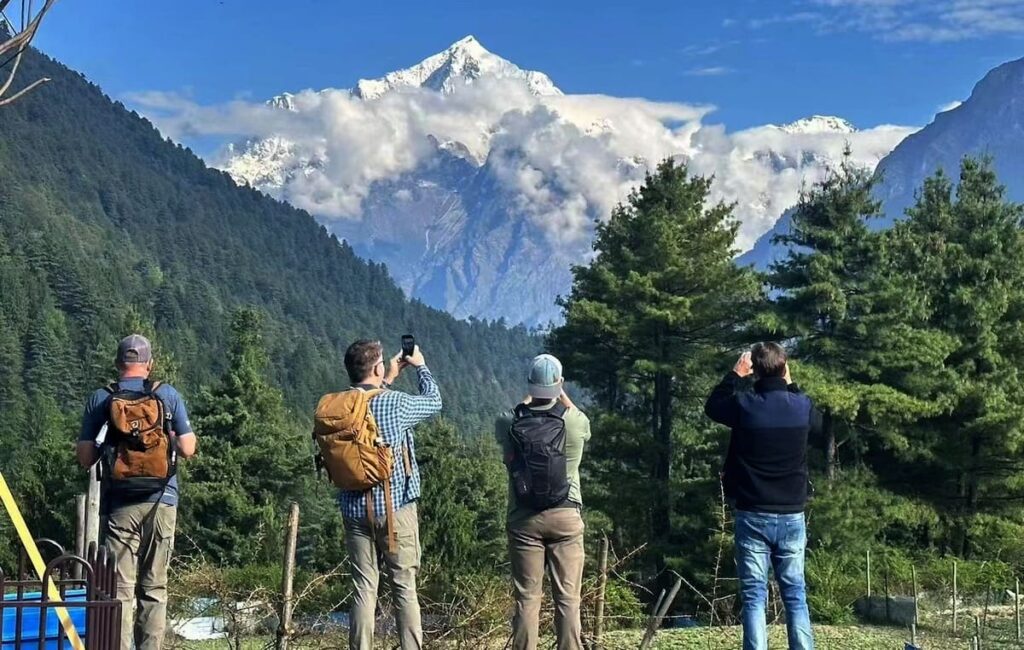
In this detailed guide, we’ll explore:
• The history, symbolism, and spiritual significance of each tradition
• How they function in daily practice
• The best ways to respectfully engage with them on your journey
Prayer Flags (Lungta): Blessings on the Wind
Origins & Basic Symbolism
Originating in the ancient Tibetan tradition of Bon, prayer flags evolved in Tibetan Buddhism to become Lungta—or “Wind Horse” flags. Each flag set of five colors—blue, white, red, green, yellow—represents one of the five elements—sky, air, fire, water, earth—as well as the Five Buddha Families and Pure Lights.
At the center is the wind horse, carrying the “Three Jewels” (Buddha, Dharma, Sangha), symbolizing the movement of positive forces and the transformation of obstacles into blessings.
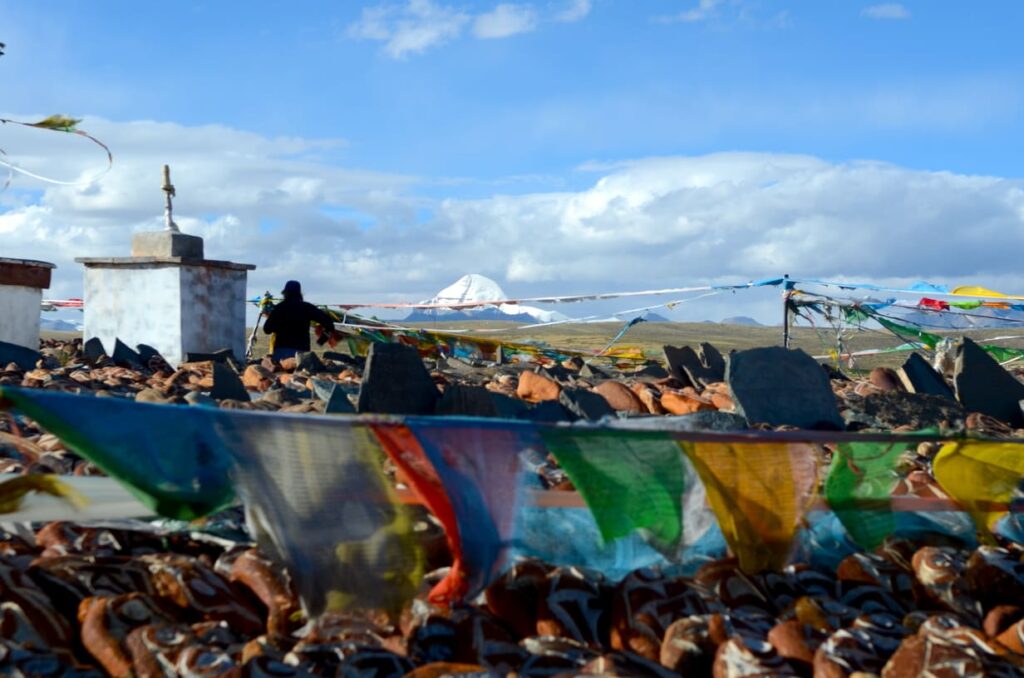
Mantras, Symbols & Sacred Textile
Many flags bear the mantra “Om Mani Padme Hum”, often alongside images of deities or the Eight Auspicious Symbols, each embodying aspects of Buddhist philosophy and protection.
Each time the wind moves them, Tibetans believe those prayers are released into the world—benefiting all beings, not just the flag bearer.
Ritual Use & Transformation
Flags are traditionally hung on auspicious days and placed in high, windy locations—mountain passes, stupas, rooftops—to allow maximum dispersal of blessings. Old, faded flags are either left to naturally disintegrate or respectfully burned or buried, often after reciting mantras like Gate Gate Paragate.
In Tibetan belief, flags are not about sending prayers to gods—but about sharing compassion and intention through the wind.
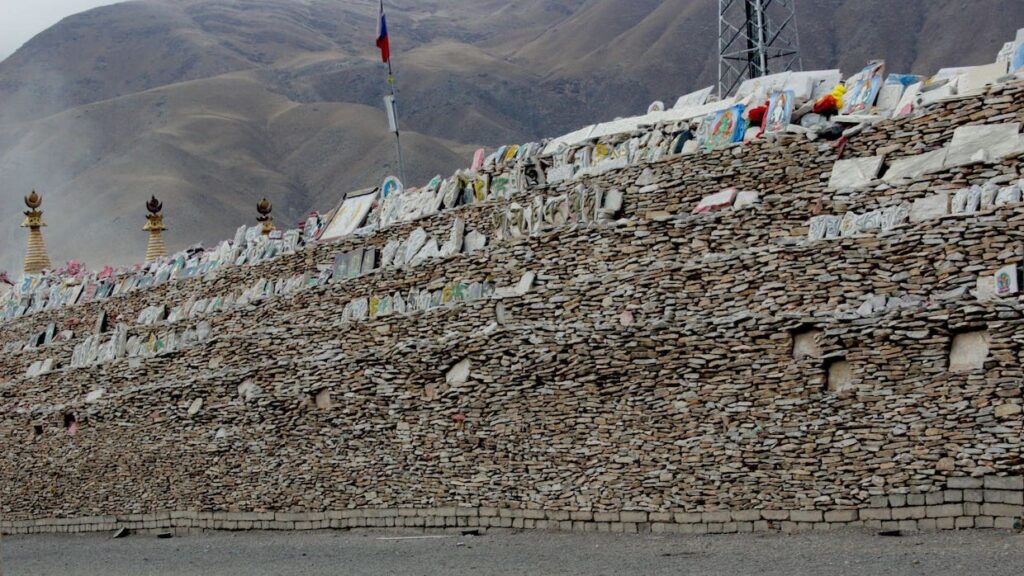
Mani Stones & Walls: Carving Compassion into the Landscape
What Are Mani Stones?
Mani stones are rocks inscribed with Buddhist mantras, scriptures, or images—most commonly Om Mani Padme Hum—carved or painted in sunk relief and often colored in the traditional six-syllable shades: white, green, yellow, light blue, red, and dark blue.
These stones form mounds (mani piles) or walls, typically placed along roadsides, riverbanks, or around sacred sites. Over centuries, pilgrims add stones as offerings, often touching their foreheads to the stone, spinning prayer wheels, or reciting verses while circling them clockwise.
Spiritual & Cultural Meaning
In Tibetan thought, stones are considered living beings with a spirit, and each carved mantra imbues the object with spiritual power and merit. Adding a new stone is akin to silently reciting the sutra—and by doing so, devotees accumulate blessings and purify karma.
Mani walls often incorporate scriptures, mandalas, images of Bodhisattvas, stylized eyes of wisdom, or the Vajra symbol, creating a sacred visual narrative along trekking paths and pilgrimage routes.
Cultural Practice & Respect
Walkers must show reverence by moving clockwise around mani walls or mounds. One should never disturb or remove stones—they carry blessings for everyone, and altering them is considered disrespectful. In some regions like Qinghai and Kham, you’ll find giant mani piles, sometimes claimed to contain billions of inscribed stones—the largest being near Yushu.
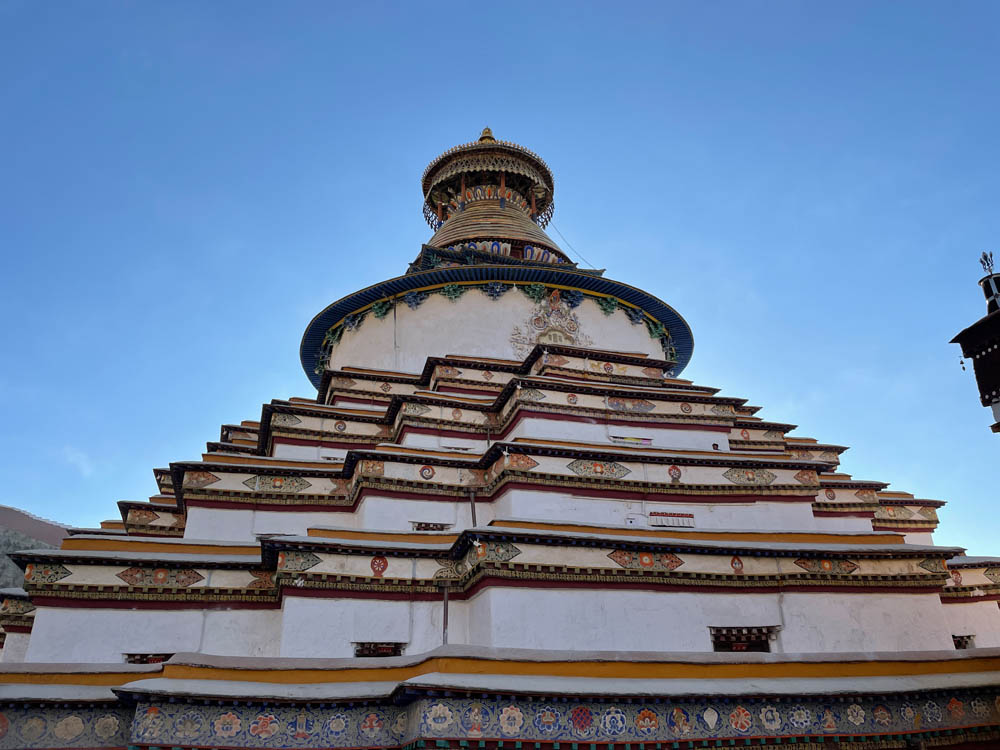
Stupas (Chörtens): Sacred Architecture of Enlightenment
What Is a Stupa?
A stupa, or chörten in Tibetan, is a symbolic structure representing the Buddha’s enlightened body, speech, and mind. Its architectural layers correspond to cosmological and spiritual concepts:
• The square base represents Earth
• The dome symbolizes Water
• The spire denotes Fire
• The parasol and crescent moon signify Air
• The sun and top represent Wisdom or Void
At many stupas, you’ll see the Eyes of the Buddha painted on each side, symbolizing universal wisdom and compassion watching over all directions.
Religious Purpose & Merit
Stupas contain relics, scripture, sand mandalas, or the Tree of Life—a pole wrapped in mantras and gems used during a consecration ritual. The act of building or circumambulating a stupa is considered extremely meritorious, leading to purification and positive karmic results, including peace, prosperity, and ultimately liberation.
Conversely, desecration of a stupa is seen as a grave transgression.
Practice & Pilgrimage
Devotees often walk clockwise around a stupa, spinning prayer wheels installed on terraces—commonly 108 wheels—each engraved with mantras. Spinning these is believed to be equivalent to verbally reciting those mantras over and over, adding spiritual weight to the pilgrimage.
Interconnection: How These Practices Work Together
Prayer flags, mani stones, and stupas are not isolated traditions—they weave together into a web of Tibetan devotional life:
• Flags disperse prayers into the environment.
• Mani stones manifest silent prayer in the landscape.
• Stupas embody enlightened mind and physical presence.
Pilgrims might hang flags at a stupa site, circumambulate it, spin prayer wheels, and pass by mani walls on their route. Each act—whether subtle or dramatic—contributes to a collective field of merit and intention.

Seeing Them on a Tibet Tour: What to Observe & How to Respectfully Engage
If you’re planning a Tibet tour or spiritual journey in Tibet, here’s how to approach these sacred symbols:
Prayer Flags
• Notice the order and color: always blue, white, red, green, yellow.
• See the central wind horse and four dignities at the corners.
• Understand they are meant to be hung high to activate their prayers.
• If old and frayed, let them fade or replace them respectfully; do not trash them .
Mani Stones
• Observe or participate in clockwise circumambulation.
• Do not remove stones or climb the pile.
• Consider adding a small stone reverently, especially if you’re on a pilgrimage trek.
• Avoid placing your feet toward the pile or mocking the site.
Stupas
• When approaching, remove hats or sunglasses and walk clockwise.
• If prayer wheels are on site, spin gently while walking.
• Respect quiet reverence of others—silence, slow pace, folded hands.
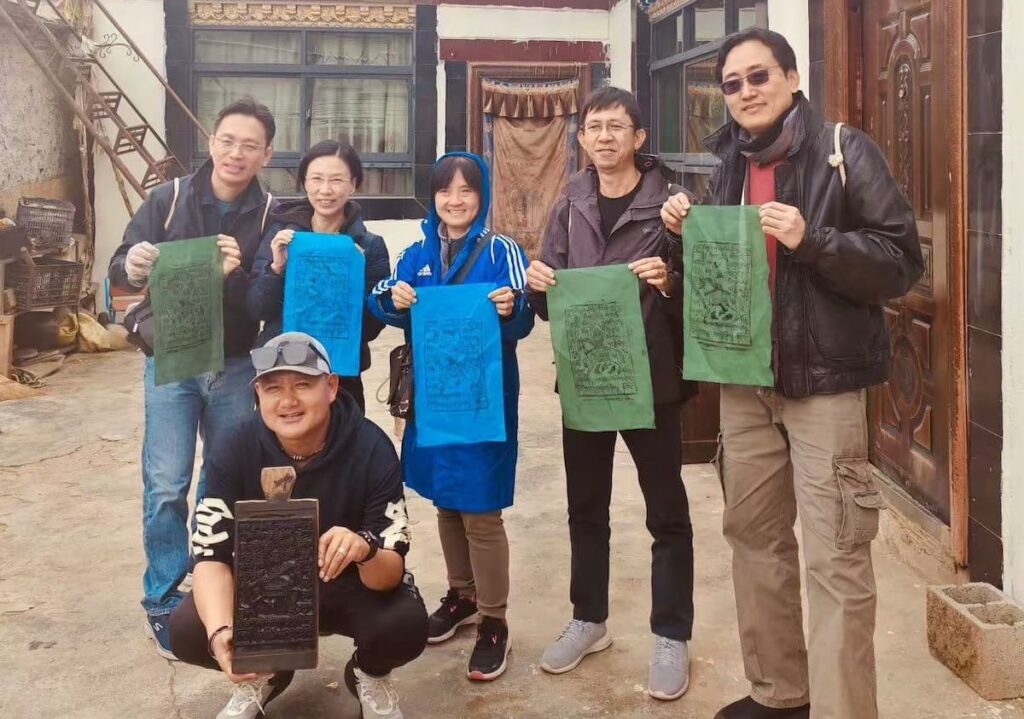
Spiritual Insights Travelers Share
Reddit and travel reflections often echo similar experiences:
“I hang flags with Om Mani Padme Hum, believing rain and wind carry karmic purification.”
“The mani stone piles are meditation in stone. You add a stone, whisper a wish—and feel connected.”
These practices remind travelers that spiritual intention isn’t confined to temples—it lives in every wind gust, pebble, and ritual gesture.
7. Cultural & Environmental Considerations
Tibetans believe in animism, honoring natural features—mountains, rivers, stones—as sacred beings. Mani stones and cairns were originally placed at mountain passes or villages to pay respect to local spirits or to mark boundaries and provide offerings to travelers.
These symbols harmonize humanity with nature and spirits—a worldview that encourages visitors to tread lightly and mindfully.
When & Where to Encounter Them in Tibet
Where to See Prayer Flags:
• Mountain passes and trails (e.g., Friendship Highway)
• Monastery rooftops and sacred hills
• Key pilgrimage paths and lakeshores
Where to See Mani Stones:
• Along trekking and pilgrimage routes (Everest Base Camp road, Kailash Kora)
• Outside monasteries and temples
• Gravel walls and mounds near lakes like Namtso
Where to Visit Stupas:
• Major temples and monastic sites (Jokhang, Potala, Tashilhunpo)
• Waystations like Drak Yerpa or village intersections
• Major regional stupas en route to Everest or Kailash (e.g., Do‑drul Chorten replica sites)
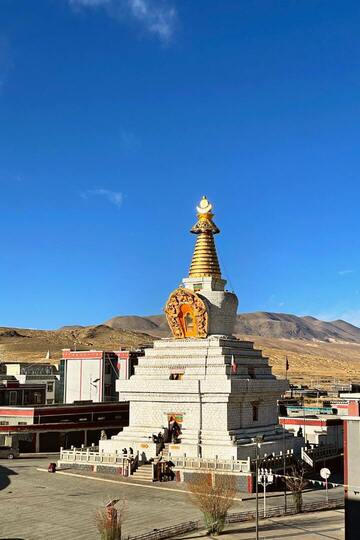
Conclusion: Symbols That Live, Pray, and Transform
Prayer flags, mani stones, and stupas are not mere relics—they are living elements within Tibetan Buddhism’s spiritual ecosystem. They:
• Express intention, compassion, and humble devotion
• Teach about impermanence, interconnectedness, and merit
• Invite travelers to participate in centuries-old rituals
• Encourage a deeper respect for the sacredness of place
Seeing these symbols in Tibet—standing before a mani wall, spinning a prayer wheel, watching flags flap at sunrise—is an invitation to listen: to the wind, the scriptures on stone, and the silent pulse of devotion that has defined Tibetan life for generations.
Planning a Tibetan spiritual itinerary?
I can help you include key sites where these traditions shine—along pilgrimage routes, at mystic hermitages, and amid stunning highland vistas. Let’s create a journey that honors the sacred threads of Tibet.
